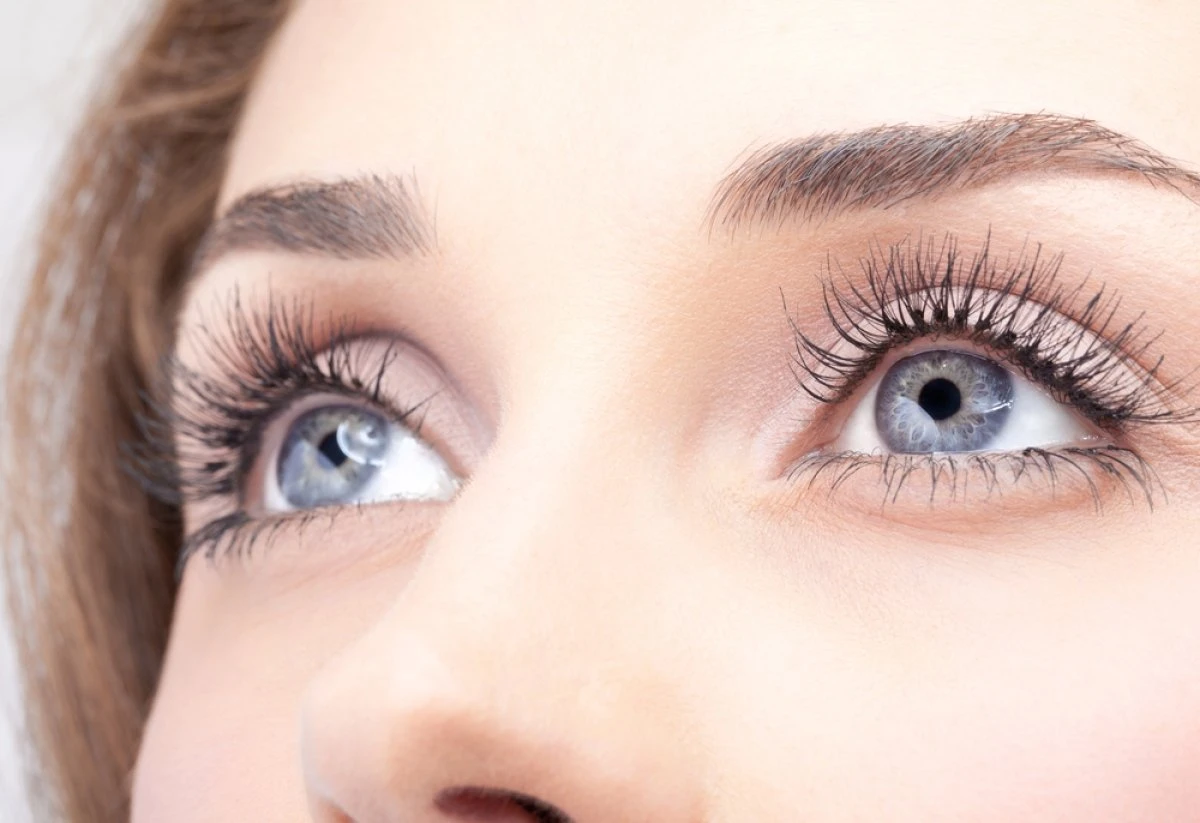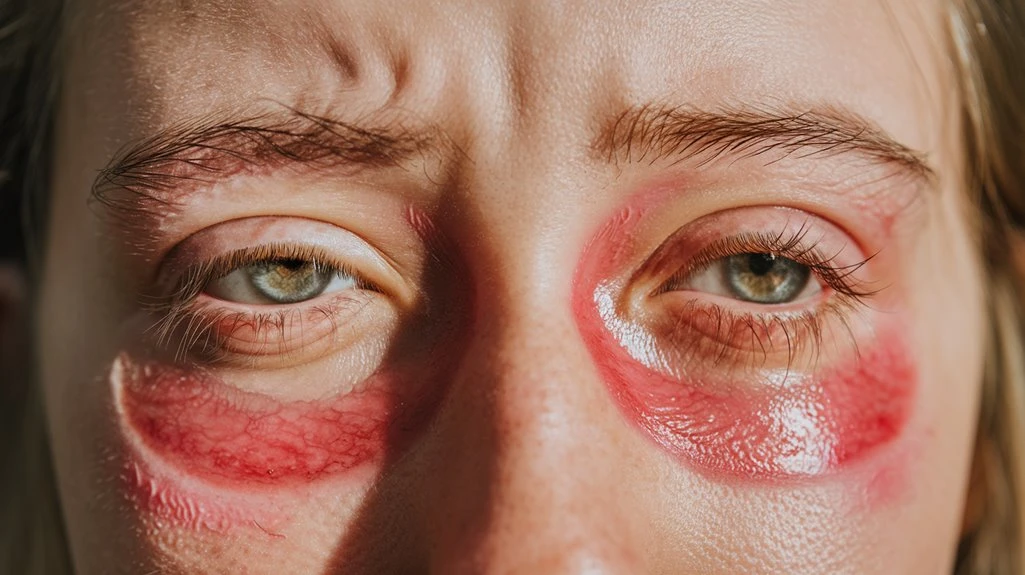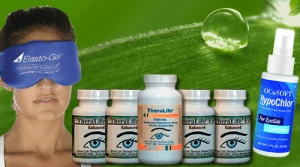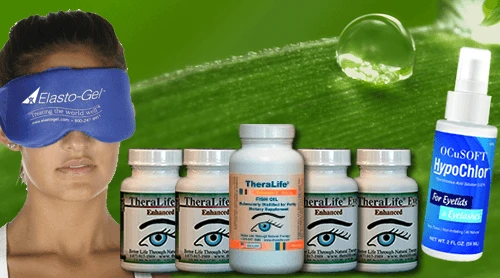When dealing with swollen, itchy eyelids, caused either by allergens or chronic blepharitis, TheraLife’s products offer significant benefits. These products help manage inflammation affecting the eyelid margins and meibomian glands, which are often targeted by allergens like airborne particles, dust, and cosmetic irritants. These irritants can lead to immune responses that cause lid edema, erythema, and disrupt the tear film.
TheraLife’s approach emphasizes the importance of recognizing these triggers and implementing effective prevention and daily care strategies. Their products are designed to enhance eyelid hygiene, manage environmental exposures, and support the overall health of eyelids and eyes. This holistic approach can prevent recurrences and alleviate discomfort associated with blepharitis, thereby improving quality of life for individuals suffering from these conditions.
By leveraging TheraLife’s specially formulated supplements and care routines, customers experience relief from symptoms, reduced swelling, and improved gland function. This ultimately minimizes the chronic irritation and debris associated with blepharitis, promoting healthier and more comfortable eyelids.
Best Blepharitis Treatment From TheraLife- When Drops Don’t Work.
Key Takeaways
- Allergies and blepharitis both cause swollen, itchy eyelids, but allergies typically produce diffuse itchiness and watery discharge while blepharitis causes lid margin inflammation.
- Airborne allergens (pollen, dust mites, dander) and chemical irritants can trigger eyelid swelling and itching, especially in sensitive individuals.
- Blepharitis arises from bacterial overgrowth or gland dysfunction, leading to chronic eyelid irritation, thickening, and crusting at the lid margins.
- Chronic eyelid inflammation from either cause can disrupt the tear film and increase risk of recurrent, worsening flare-ups if not treated early.
- Daily eyelid hygiene, allergen avoidance, and proper management with warm compresses and lubricants help reduce symptoms and prevent relapses.
Common Allergens Triggering Eyelid Reactions
Numerous allergens, including airborne particles such as pollen, dust mites, and animal dander, provoke immunologic responses localized to the eyelid margin and conjunctiva. When you’re exposed to pollen—especially during peak seasonal fluctuations—the sensitive tissue of your eyelid often becomes inflamed, leading to the characteristic allergic response. Dust mites, which thrive in household fabrics, and pet dander, originating from sebaceous secretions, both readily adhere to periocular skin, increasing your risk for localized irritation. Mold spores constitute another potent allergen, dispersing easily and settling on the eyelid surface. Chemical irritants in household cleaners and environmental pollution may directly destabilize the ocular surface barrier. Similarly, cosmetic allergens, including preservatives and fragrances in eye makeup, can trigger a hypersensitivity response, targeting the skin and mucosal surfaces adjacent to the lid margin. A lack of proper eyelid hygiene can exacerbate symptoms, making regular cleaning essential to prevent flare-ups.
How Blepharitis Develops and Impacts the Eyelids
You often encounter blepharitis when bacterial overgrowth, sebaceous gland dysfunction, or allergic reactions disrupt the eyelid margin’s normal anatomy. Inflammatory processes then target the eyelid’s meibomian glands and follicular structures, leading to erythema, edema, and tissue damage. If not managed effectively, you’ll typically experience chronic, relapsing symptoms such as lid irritation, crusting, and recurrent discomfort. Eyelid hygiene is crucial for symptom management, as maintaining cleanliness can help reduce inflammation and prevent further complications.
Common Causes of Blepharitis
Blepharitis originates from complex interactions between the eyelid margin’s anatomy, microbial colonization, and dysfunction of the meibomian glands.
You’ll typically see this disorder develop when bacterial infections—most commonly due to Staphylococcus species—thrive along the eyelash follicles. This colonization disrupts the delicate balance of the eyelid microbiome and often stimulates immune-mediated responses.
Additionally, chronic skin conditions such as seborrheic dermatitis and rosacea can exacerbate gland dysfunction and prolong eyelid inflammation.
Anatomically, blocked or altered meibomian gland secretions impair lipid layer stability, raising the risk of eyelid irritation and further microbial growth.
Factors like poor lid hygiene, environmental exposures, or allergic predispositions may amplify these effects.
Effective treatment methods target both symptoms and underlying causes, with options including oral antibiotics, eyelid hygiene, tear supplements, and topical treatments.
Recognizing these underlying causes is essential for effective prevention and management of recurrent or persistent blepharitis symptoms.
Inflammation and Eyelid Damage
Although microbial colonization and gland dysfunction initiate eyelid margin irritation, it’s the resulting inflammatory cascade that perpetuates tissue damage in blepharitis.
As the immune response escalates, infiltration of leukocytes and proinflammatory mediators disrupts the integrity of the eyelid epithelium and meibomian glands. You’ll notice eyelid sensitivity increasing as swelling, erythema, and surface irregularities compromise barrier function and ocular surface lubrication.
Persistent inflammation promotes squamous metaplasia, plugging gland orifices and amplifying irritation.
- Chronic erythema and edema result in pronounced eyelid thickening and textural changes.
- Loss of eyelashes (madarosis) and scarring may follow recurrent epithelial injury.
- Heightened eyelid sensitivity limits tolerability to topical agents, impacting treatment options.
Prompt recognition of anatomical changes allows you to tailor evidence-based treatment options that target both inflammation and its sequelae. Common causes include bacterial infection, seborrheic dermatitis, and meibomian gland dysfunction (MGD), which are essential to address in treatment.
Chronic Symptoms and Relapse
When eyelid inflammation persists beyond the acute phase, it often evolves into a cycle of chronic symptoms that include recurrent burning, foreign body sensation, and pronounced lid margin irritation.
In this chronic state, you may experience ongoing changes to the eyelid’s anatomical integrity, including thickening of the lid margin and atrophy of the Meibomian glands.
Chronic irritation disrupts the tear film and promotes fibrotic changes, making your eyelids more susceptible to recurrent flare ups. Each relapse can intensify inflammation, triggering further dysfunction of the glands and perpetuating a feedback loop of symptoms.
Evidence shows that without intervention, these cycles of relapse can compromise ocular surface health, leading to persistent discomfort and visual disturbances.
Early recognition and management are essential to break this pattern and preserve eyelid structure. Inflammatory cytokines such as IL-1beta and TNF-alpha play a significant role in the inflammatory mechanisms underlying blepharitis, contributing to chronic irritation and gland dysfunction.
Best Blepharitis Treatment From TheraLife- When Drops Don’t Work.
Differences Between Allergies and Blepharitis Symptoms
Since both ocular allergies and blepharitis can manifest with redness, irritation, and tearing, distinguishing between their symptoms requires careful evaluation of anatomical involvement and pathophysiology.
You’ll notice that allergy types—such as seasonal or perennial allergic conjunctivitis—primarily produce diffuse itchiness, watery discharge, and conjunctival swelling, sparing the eyelid margins.
In contrast, blepharitis stages are defined by lid margin inflammation, meibomian gland dysfunction, and often, the presence of greasy scales or debris along the lashes.
Anatomically, symptoms localize differently:
- Allergies: Predominant in the conjunctiva, presenting with papillae or chemosis.
- Early blepharitis: Involves eyelid margins, shows erythema, and crusting at lash bases.
- Advanced blepharitis: Exhibits chronic lid thickening, telangiectasia, and possible trichiasis.
Careful clinical assessment helps you pinpoint the pathological process. Regular eyelid hygiene is crucial to minimize symptom recurrence and manage blepharitis effectively.
Environmental Factors Contributing to Eyelid Inflammation
Beyond differentiating allergies from blepharitis by anatomical signs, it’s important to recognize how environmental exposures exacerbate eyelid inflammation.
Climate change can alter allergen dispersion patterns, increase pollen loads, and affect air quality, directly impacting the ocular surface. You may notice heightened irritation and inflammation as particulate matter and pollutants, especially from industrial or vehicular sources, deposit onto the eyelid margin and conjunctiva.
Pollution exposure elevates oxidative stress and promotes recruitment of inflammatory mediators within the eyelid tissues. This compromises the local immune barrier, increasing susceptibility to both allergic and non-allergic inflammatory responses.
Additionally, abrupt fluctuations in humidity or temperature—a consequence of climate change—further destabilize the tear film, promoting meibomian gland dysfunction and exacerbating edema and pruritus.
Chronic dry eyes, a common condition, can also be aggravated by these environmental factors, further intensifying the discomfort and inflammation experienced in the eyelid region.
These environmental interactions magnify chronic eyelid inflammation.
Identifying Signs of Swollen and Itchy Eyelids
Although eyelid discomfort may seem nonspecific, swollen and itchy eyelids exhibit hallmark anatomical changes that can guide clinical differentiation between allergic and inflammatory etiologies.
When evaluating your eyelids, pay attention to pronounced swelling localized to the periorbital tissue, intensified pruritus, and visible eyelid redness. Allergic reactions often trigger rapid onset of edema and hyperemia, contrasted by the chronic, scale-laden appearance in blepharitis.
Skin sensitivity—manifesting as increased tenderness or subtle burning—commonly accompanies acute allergic presentations. Anatomically, you may also observe the following:
- Diffuse eyelid redness that blurs the margin between upper and lower lids
- Prominent periorbital swelling with or without visible fluid accumulation
- Skin sensitivity characterized by soreness, warmth, or reactivity upon touch
Chronic conditions like posterior blepharitis are often difficult to treat due to persistent inflammation and require ongoing management to control symptoms effectively. These signs can precisely inform clinicians when distinguishing allergy-driven versus inflammatory eyelid pathology.
Prevention Strategies for Allergy-Related Eyelid Problems
To minimize allergy-related eyelid inflammation, you should prioritize allergen avoidance techniques and consistent eyelid hygiene. Daily cleansing reduces antigenic load along the lid margin and meibomian gland orifices, limiting proinflammatory responses. Additionally, you can employ protective measures like wraparound eyewear to shield the ocular adnexa from airborne irritants. Regular use of warm compresses, for about 10 to 15 minutes per session, can effectively melt and release oils from meibomian glands, further aiding in reducing inflammation.
Allergen Avoidance Techniques
Since the eyelids’ thin skin and lash follicles are easily irritated by airborne and contact allergens, implementing targeted avoidance strategies is essential for preventing allergy-related blepharitis.
By limiting your exposure to identified allergen sources, such as pollen, dust mites, and pet dander, you can achieve significant symptom relief and reduce inflammatory changes in periorbital tissues.
Evidence shows that environmental controls and allergen reduction minimize hypersensitivity responses at both the epidermal and follicular levels.
Proper hygiene practices are essential for preventing flare-ups of blepharitis, as they can help reduce the buildup of allergens and bacteria on the eyelids.
For effective prevention of eyelid swelling and itching, consider these anatomical and environmental interventions:
- Use high-efficiency particulate air (HEPA) filters indoors to remove airborne allergen sources
- Avoid touching your periocular area after potential allergen contact
- Wash bedding regularly in hot water to eradicate dust mites and reduce accumulation of allergens
Proactive avoidance improves ocular surface comfort.
Daily Eyelid Hygiene
Maintaining meticulous daily eyelid hygiene plays a critical role in preventing allergy-related blepharitis by minimizing allergen accumulation along the lid margin and lash follicles.
To optimize eyelid care, you should establish a consistent hygiene routine targeting these anatomical sites, which are prone to trapping pollen, dust, and other irritants.
Scientific studies indicate that gentle cleansing of the eyelid margin using sterile wipes or diluted baby shampoo reduces microbial colonization and biofilm development—both of which can exacerbate inflammatory responses.
Carefully clean along the base of your eyelashes, using horizontal strokes to dislodge debris and residual allergens.
Avoid vigorous scrubbing, which can cause microtrauma to meibomian glands and compromise the barrier function of the eyelid skin.
Adhering to a controlled eyelid hygiene routine enhances the integrity of periocular tissues, supporting effective allergy management.
Protective Eye Measures
Several targeted protective measures can considerably reduce the risk of allergy-related eyelid complications by limiting direct contact between ocular surfaces and environmental allergens.
You should prioritize anatomical protection to inhibit allergen adhesion and subsequent inflammatory cascades in periocular tissues. Evidence supports using protective eyewear as an effective mechanical barrier, shielding the conjunctiva and eyelid margins from airborne particulates and pollen.
Additionally, maintaining periocular moisture retention helps stabilize the tear film, which functions as your physiological defense against allergen incursion and irritants.
- Protective eyewear: Barrier glasses or wraparound sunglasses reduce entry of allergens and irritants onto the ocular surface.
- Moisture retention: Humidifiers and ocular lubricants decrease evaporative tear loss, preserving tear film stability and ocular surface integrity.
- Environmental control: Air purifiers, allergen-proof bedding, and regular cleaning minimize local allergen load, supporting anatomical defense.
Best Blepharitis Treatment From TheraLife- When Drops Don’t Work.
Frequently Asked Questions
Can Diet Changes Help Reduce Swollen, Itchy Eyelids?
If you’re seeking relief for swollen, itchy eyelids, dietary adjustments may offer benefits.
Consuming omega-3 fatty acids, found in fish or flaxseed, can improve meibomian gland function, stabilizing the eyelid’s lipid layer. Nutritional supplements like vitamin A and antioxidants support ocular surface health and immune function.
Evidence associates reduced intake of pro-inflammatory foods with diminished eyelid inflammation, so optimizing your diet can positively influence anatomical pathways implicated in periorbital edema and pruritus.
Are There Home Remedies for Soothing Eyelid Irritation?
Think of your eyelids as a sensitive gatekeeper, prone to irritation when stressed. You can employ cool compresses, a shield against inflammation, to constrict blood vessels and minimize swelling.
Applying bags of chilled, caffeine-rich herbal teas—like chamomile—may leverage their anti-inflammatory flavonoids, soothing periorbital tissues. Just verify the eyelid skin’s intact before application to avoid further compromise.
Consistent, gentle cleansing supports your ocular surface barrier and helps restore comfort.
How Long Do Eyelid Allergies or Blepharitis Usually Last?
You should expect symptom duration for eyelid allergies to vary, typically resolving within a few days once allergens are removed and antihistamines or topical treatments begin.
Blepharitis, however, often results in chronic or recurrent symptoms due to persistent inflammation of the eyelid margins and meibomian glands.
Treatment options, such as lid hygiene, warm compresses, or antibiotics, target underlying causes but may require prolonged or ongoing management to maintain symptom control and prevent exacerbations.
Can Contact Lenses Worsen Eyelid Inflammation?
Think of your eyelids as delicate shutters—when you place contact lenses on your eyes, improper lens hygiene or poor eyelid care can cause inflammation to flare up like wildfire.
Research shows wearing contacts increases the risk of depositing allergens and bacteria on the ocular surface, leading to conjunctival and eyelid irritation.
Maintaining strict lens hygiene and meticulous eyelid care is paramount to minimize friction, microbial colonization, and exacerbation of inflammation in periorbital tissues.
What Complications Can Arise From Untreated Swollen Eyelids?
If you leave swollen eyelids untreated, you risk several complication types, including chronic conjunctivitis, corneal ulceration, and meibomian gland dysfunction.
These conditions can impair ocular surface integrity, potentially causing vision loss. Bacterial superinfection and eyelid scarring can further escalate the risks.
Early intervention matters—you’ll want to explore treatment options like topical antibiotics, lubricating ointments, or corticosteroids, based on your physician’s evidence-based anatomical assessment of the eyelid pathology.
Best Blepharitis Treatment From TheraLife- When Drops Don’t Work.
Conclusion
Theralife.com offers a range of products designed to address the root causes of eyelid inflammation, whether it’s due to allergens or conditions like blepharitis. Their innovative solutions target anatomical changes such as swollen tarsal plates and disrupted meibomian glands, providing relief and preventing persistent symptoms. By accurately identifying the cause of your eyelid swelling or itchiness, Theralife products can transform your approach to eyelid health. Will you leverage their expertise to uncover the precise trigger behind your discomfort, or allow it to remain a mystery?





